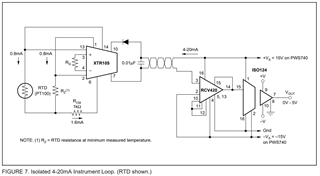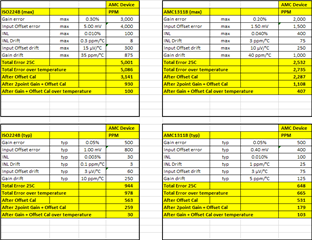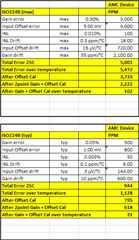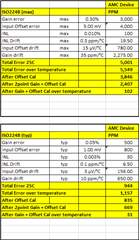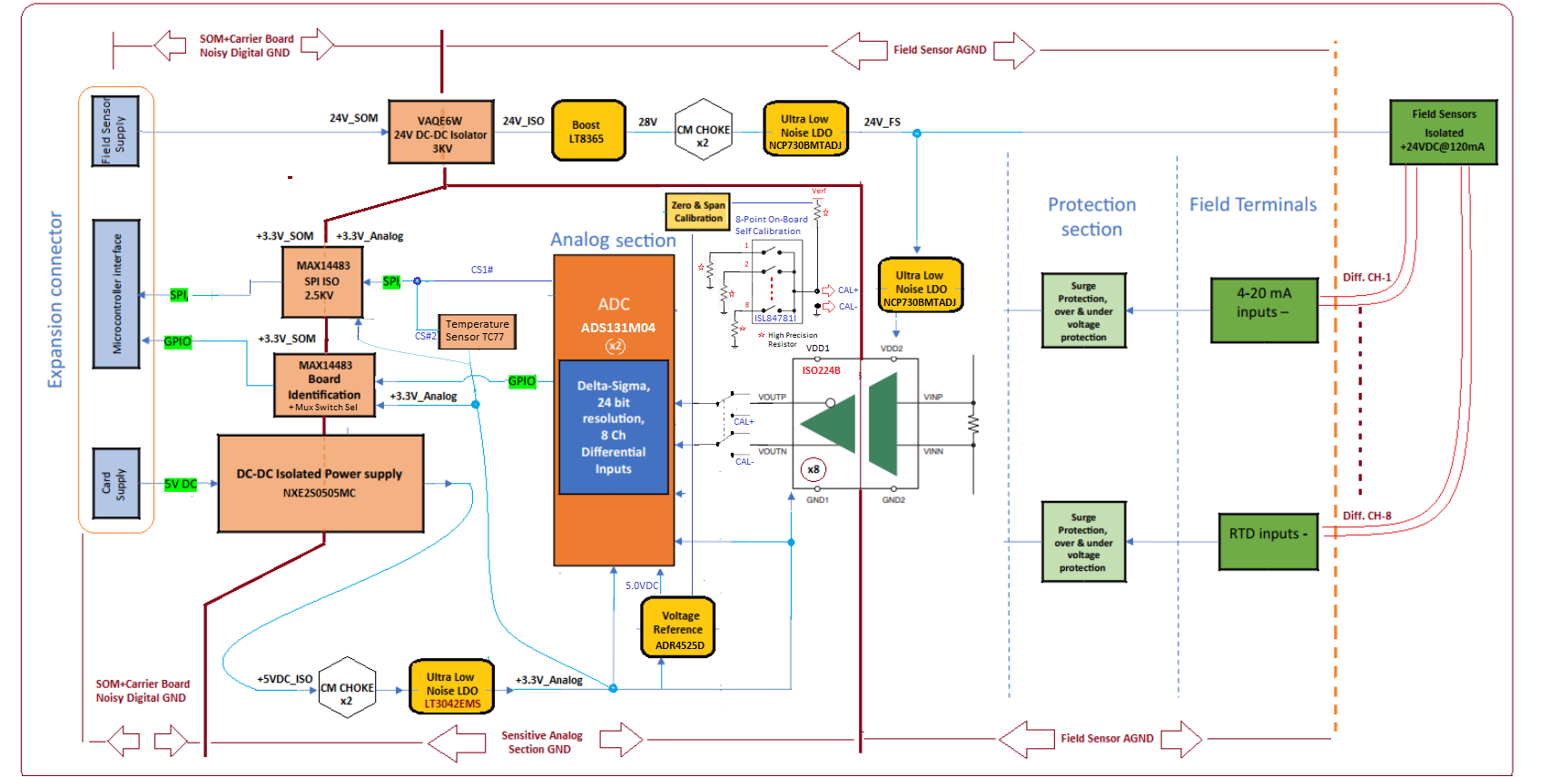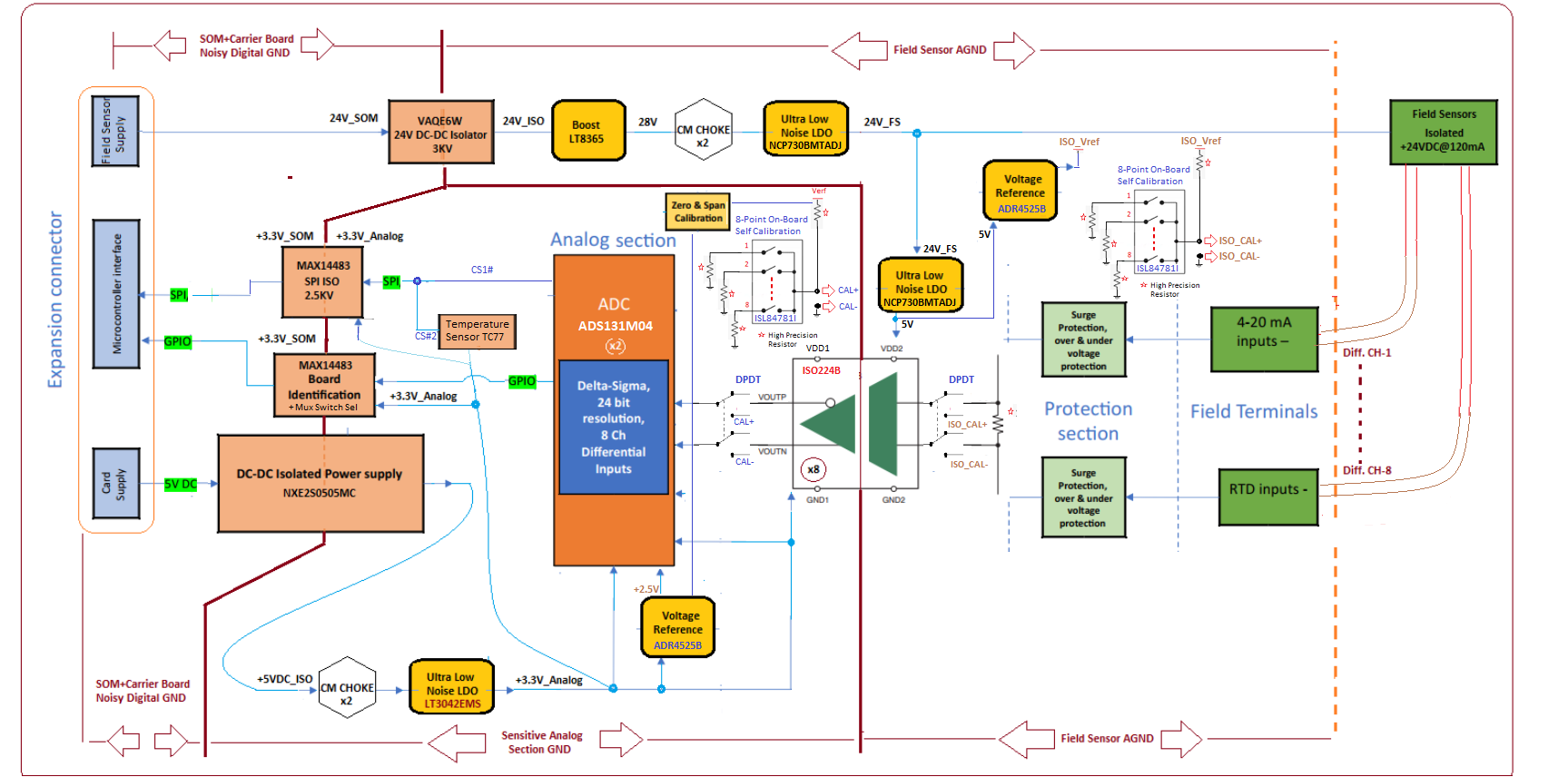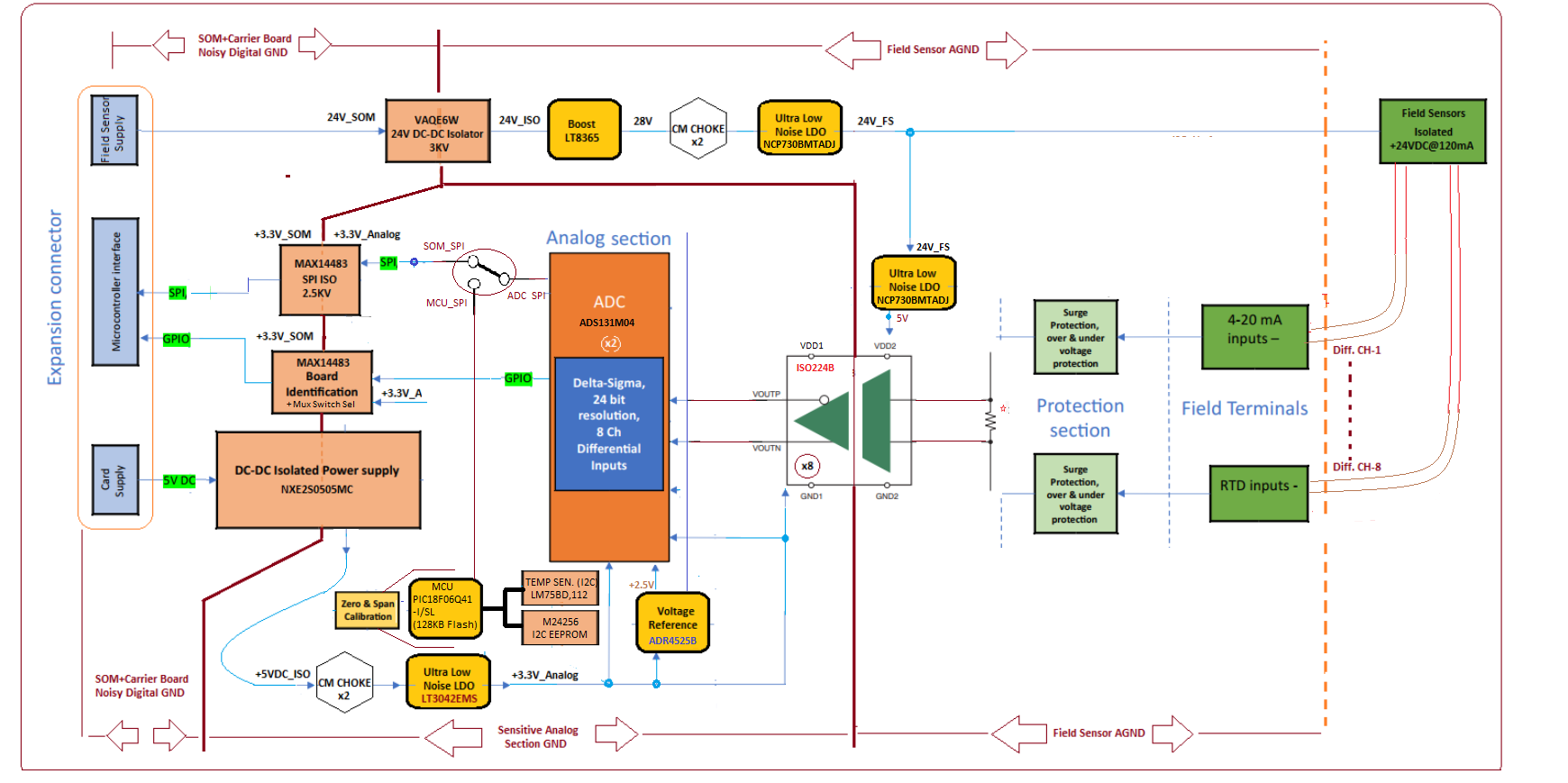Other Parts Discussed in Thread: ADS1234, XTR105, ISO124, RCV420, , ISO224, AMC1336, ADS131M04, ADS131A04, ADS131E04, REF70, REF7025
Dear Sir/Madam,
We have below specification from client to sense Analog inputs. We are planning to use TI's ADC : ADS1234 for this project.
**********************************
• 8-Ch Differential Analog Inputs.
• 4/8 - Ch (Analog inputs: 0-5Vdc, 1-5Vdc, 4-20mAmp, 0-20mAmp). Accuracy <0.008% FS. On board 250 Ohm shunt resistors -selectable for mA type inputs. Input impedance 1MOhm for mV type inputs.
• 4/8 – Ch (RTD input – PT100 type). -140 - +220 deg. C. for 100 ohms input. Resolution 0.01 deg. Celsius. In the same design these
4 Ch can also be selectable as Analog inputs (Analog inputs: 0-5Vdc, 1-5Vdc, 4-20mAmp, 0-20mAmp). having same specification
specified in above point
**********************************
We need best Analog Front End's cost effective solution from isolation and accuracy point of view. From below two options which option we need to select and what are PROS and CONS between two options. We need to submit quotation to client by end of tomorrow. Your earliest response will help us lot.
Option : 1 We will go with ISO124+XTR105+RCV420 combination as per shown in attached reference design image.
Option : 2 We will go with AMC1100 Fully-Differential Isolation Amplifier
